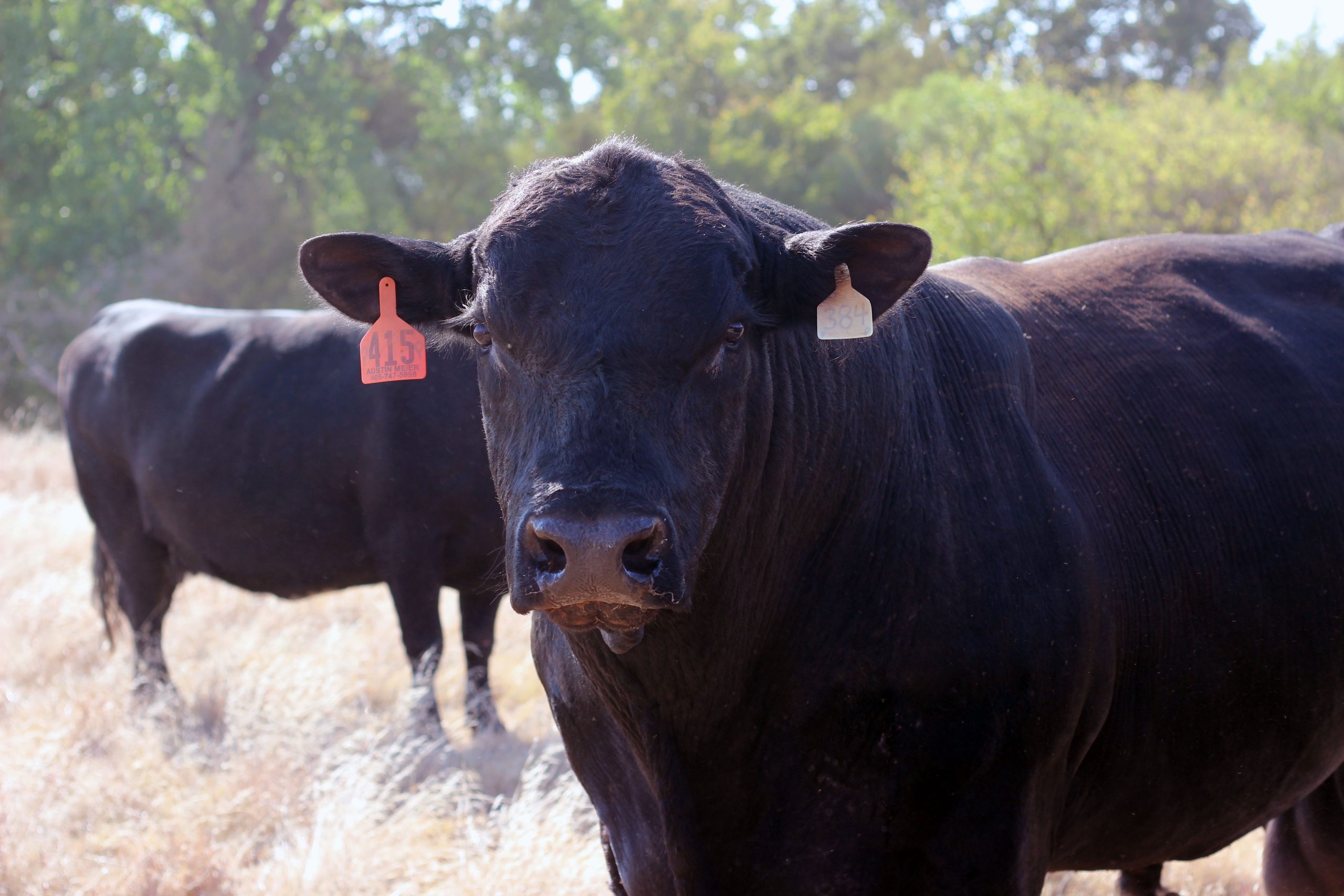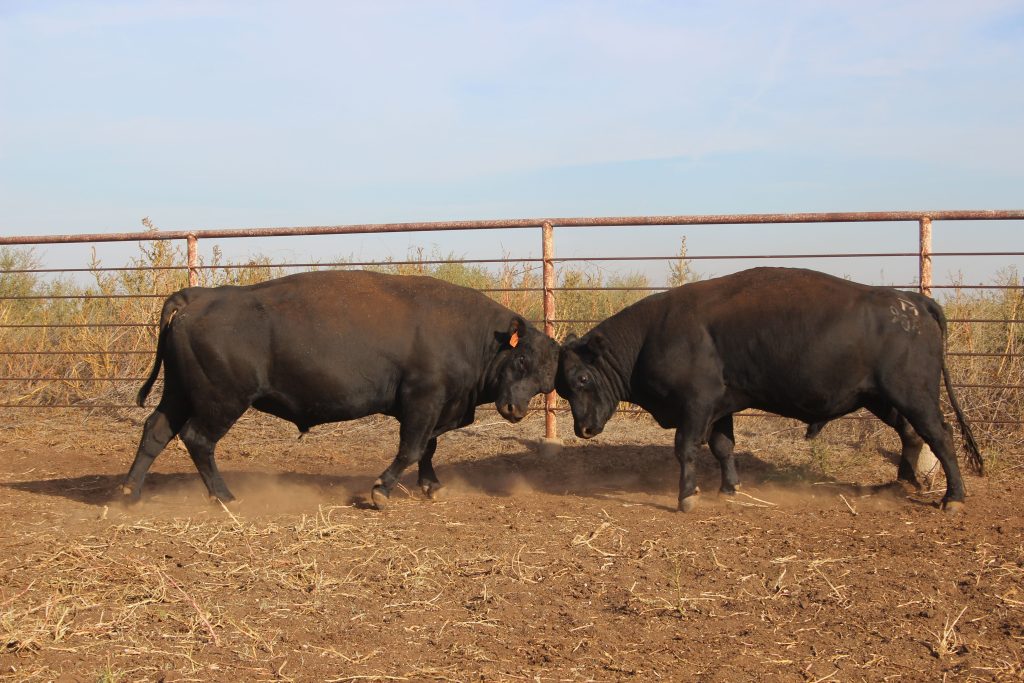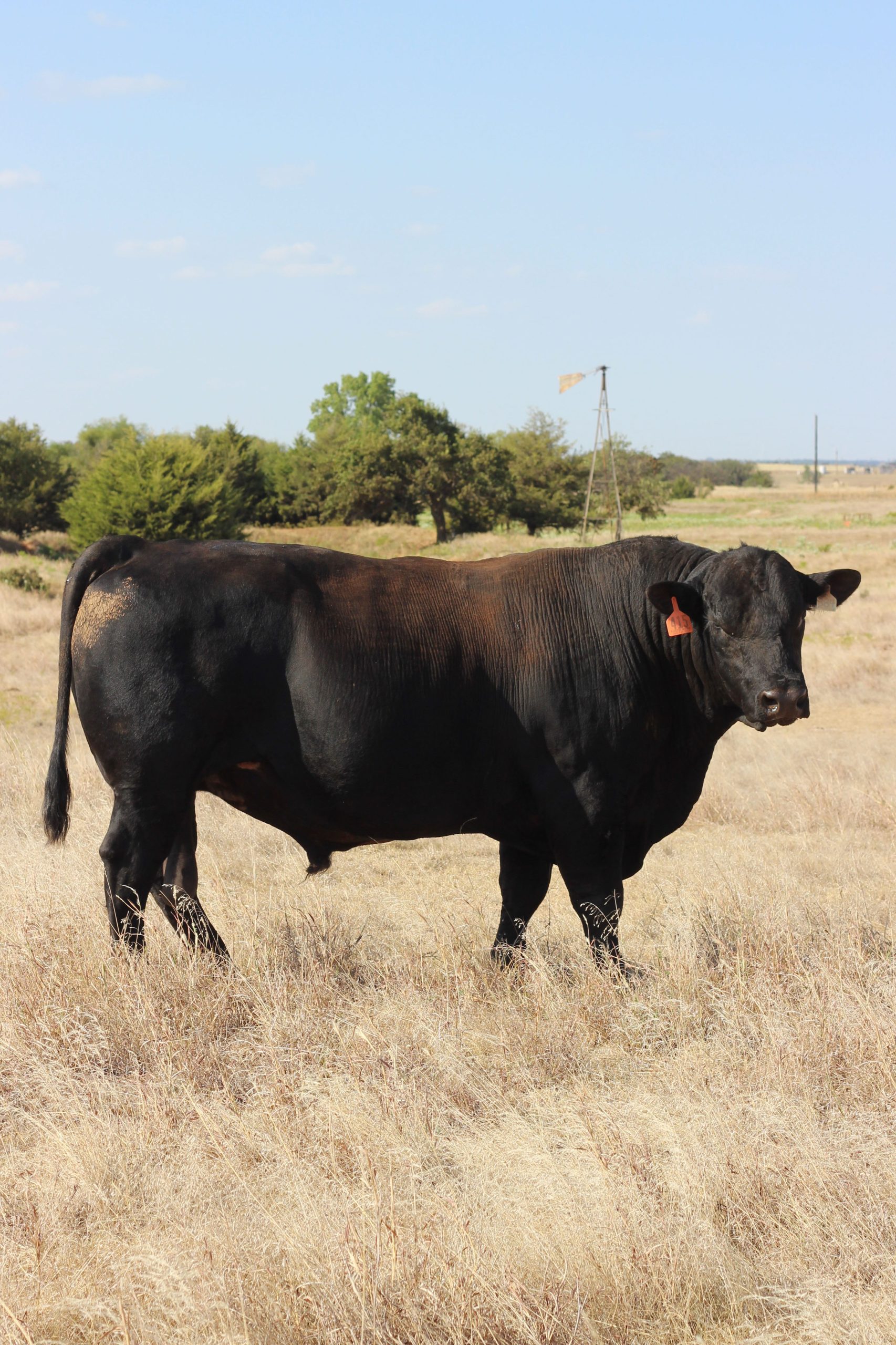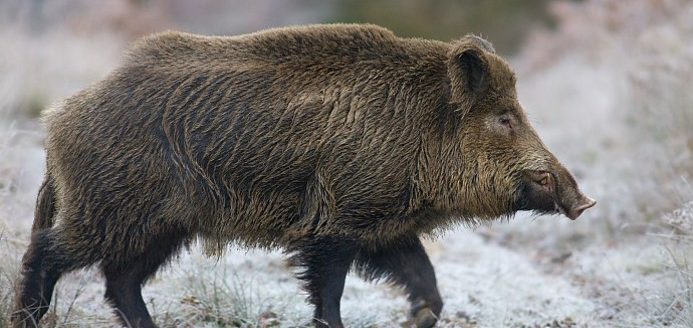Breeding soundness exams are no bull

His masculine physique is undeniable as he struts across the pasture—every muscle rippling as he moves. Sure, this bull is easy on the eyes, but behind those rugged good looks he could be keeping a costly secret. He looks the part, but do you know if he’s shooting blanks? A breeding soundness examination can provide the answers and put dollars back in your pocket at the same time.
BSEs include both a physical and reproductive assessment. They are used to determine if a bull is fertile and able to service females. Dr. Karen Hall, DVM, and owner at Deep South Veterinary Solutions—a mobile veterinary practice in Oklahoma—conducts BSEs often. She recommends an annual BSE on all bulls, starting at 18 months to 2 years of age.
“Every bull starts out as fertile until they show us different,” Hall said. “Age isn’t a disease. There are young bulls that fail for different reasons, just as there are old bulls. Some things you can’t always see clinically.”
Lane Hale, bull lease manager at 100th Meridian Ranching in Canadian, Texas, said BSEs are a must in his profession. The ranch leases Black Angus, Red Angus and Charolais bulls to cattle producers from southern Montana to eastern Missouri and all the way to the southern tip of Texas.
“We test about 450 bulls a year, and if they can’t pass a breeding soundness exam, they’re not making us or the customer any money,” Hale said. “Bulls are tested prior to every turnout.”
Hale said about 15% to 20% of 100th Meridian’s bulls fail a BSE in an average year. Some are retested and pass at a later date, but the information garnered by these tests is essential for ranch decision-making.
“It’s a way to protect your investment,” Hall said. “If you have 36 cows and one bull, and one cow out there isn’t cycling or has developed some type of issue with her fertility, but the bull is good, in theory you will still have 35 calves on the ground. If that bull’s bad, you’ve got no calves on the ground. Your bull is your limiting factor, and it’s really the opportunity cost of not getting him checked.”
The measure of fertility
Hall broke down the components of a BSE. She said for the physical exam, veterinarians check a bull’s eyesight and the structural quality of the feet and legs. She said adequate vision is paramount for bulls because they have to be able to see the female and discern which end to mount during breeding.
“Bulls also have to have really sound feet and legs because they travel a lot of miles,” Hall said. “They have to use their back legs to actually jump up and mount the female. They could be perfectly fertile, but if they have an injury to their knee or stifle, and it’s not comfortable to mount that female, then they won’t.

Veterinarians also look for any other indications of illness, infection or disease during the physical exam. The reproductive exam involves an inspection of the bull’s reproductive anatomy. The veterinarian will palpate the testicles, sheath, scrotum, penis and spermatic cord, looking for abnormalities. Hall said a scrotal circumference measurement is also an important element of the physical exam.
“We take the actual circumference of the two testicles within the scrotum, and that is an indicator of fertility, and particularly fertility in the females that that bull will sire,” Hall said. “The larger a bull’s scrotal circumference, the more fertile his female offspring should be.”
Hall said a general rule of thumb is that bull testicles should measure 34 centimeters by the time the bull turns 2. During the reproductive exam, a veterinarian will also collect a seminal sample for analysis.
“First, we look at it grossly in the collection cup,” Hall said. “We’re taking note of really thick, clumpy semen. Semen that is super white, off-colored, yellow or green can also indicate infection somewhere in the reproductive tract.”
According to Hall, BSEs are also a convenient opportunity to vaccinate, deworm and test for sexually transmitted diseases, such as Trichomoniasis.
Under the microscope
Next, the sample is viewed through a microscope. Hall said this is the point in the exam to study the motility and morphology of the sperm. Motility measures how easily sperm cells move, and morphology relates to the anatomy of the sperm cells. Veterinarians score a semen sample’s motility with a percentage.
“A score of 90% would mean 90 out of 100 of those sperm cells are swimming or have progressive motility across the microscope viewing field,” Hall said. “They have to have at least 30% normal motility to pass.”
With morphology, veterinarians are examining the head, mid-piece and tail of the sperm cells. Hall said a morphologic issue is most likely to be reason a bull fails the BSE test.
“They can have abnormalities caused by different things, such as cold shock, illness, injury or if the animal is really immature,” Hall said. “We count 100 sperm, and we note how many abnormalities to determine what percentage are normal and what percentage are abnormal. They have to have at least 70% normal morphology to pass a breeding soundness exam.”
Hall said veterinarians pass, fail or defer bulls in a BSE test. She said young bulls that need more time to mature, or bulls that are significant to the owner, are most likely to be given another opportunity to test.
“I probably defer more bulls than I fail,” Hall said. “Maybe he had some white blood cells in his sample, but otherwise was passable, so we treat him or give him sexual rest and repeat his BSE in 60 days. But a lot of that just depends on your conversation with your clients. Some clients have animals that have a high genetic value, and they can’t just haul him to the sale barn. And sometimes they don’t want to accept the answer.”
Hale said if he has a bull that fails, it is usually the reproductive side of the exam. He also noted the time of year can play a factor in whether a bull passes or fails a BSE.
“When we’re testing bulls in March and April, we see a lot more incidents of bulls that aren’t fertile,” Hale said. “Sometimes it’s just that their semen is kind of stale and old, and they just needed to be cleaned out. We test them again in a week, and they are sometimes good to go.
An investment in productivity
Hall said the cost of performing a BSE can be a deterrent for some producers. The average cost for an examination is between $50 and $100, depending on location and veterinarian.
“People are turned off by that cost, which can add up if you have a large bull battery, but there’s nothing as expensive as an open cow on your operation,” Hall said. “She’s basically eating for free and not earning her keep, and you’re getting no return on your investment with her.”
Hall said research has shown that for every dollar spent on a BSE, there’s a $6 to $7 return on investment. That ROI is not just from covering cows. It also comes from efficiency of timing. Hall said the goal is to have every cow bred within a 42-day window, but if the bull is not able to accomplish a productivity goal like this, he could be losing money.

“It’s not just about getting calves on the ground,” Hall said. “We’re trying to remove sub-fertile bulls or bulls that are not pulling their weight.”
Hall and Hale both agreed that the goal is for all calves to be born in a 21-day window, and if the bull is underperforming, the financial losses can be eye-opening.
“For calves born outside that window, there’s about a $50 to $60 per head loss on those calves that lag behind,” Hall said.
Hale agreed. He said uniformity sells, and cattle producers can add value by producing a consistent and more marketable calf crop.
“It’s a huge trickle-down effect, and I think that’s what some people don’t realize when they hear their bull is sub-fertile,” Hall said. “It’s not just can he get a cow bred. It’s how efficiently and effectively he can do so.”
Additionally, a bull that can cover every cow in the first cycle is also a time saver for the producer.
“It really cuts down on your labor and your animal handling whenever we have a uniform group,” Hale said. “Otherwise, you have to do seven different brandings and work calves multiple times. That stresses the mamas and calves.”
Even if a bull passes the exam, Hall said sometimes a BSE gives producers a heads up on a future issue that can give them ample time to plan for next year’s breeding season. Hale agreed.
“The No. 1 thing that I see is people get in a bind, and they’re forced to make big decisions, fast,” Hale said. “I think breeding soundness exams are important, and I think they need to be done 60 to 75 days before you’re planning on turning them out. That’s the shelf life on semen, and if a bull’s going to get turned around, that gives us time for it. And if not, we’ve got two months to figure out plan B, not three days.”
A bull is one of the largest investments for a cow-calf producer, and it is financially wise to know that he is up to the task, even if he looks in prime condition. There is no magic button to push and turn back the clock on breeding season, and “probably fertile” may not be good enough. He may be a mysterious specimen, but his reproductive capabilities should not be.
Lacey Vilhauer can be reached at 620-227-1871 or [email protected].



